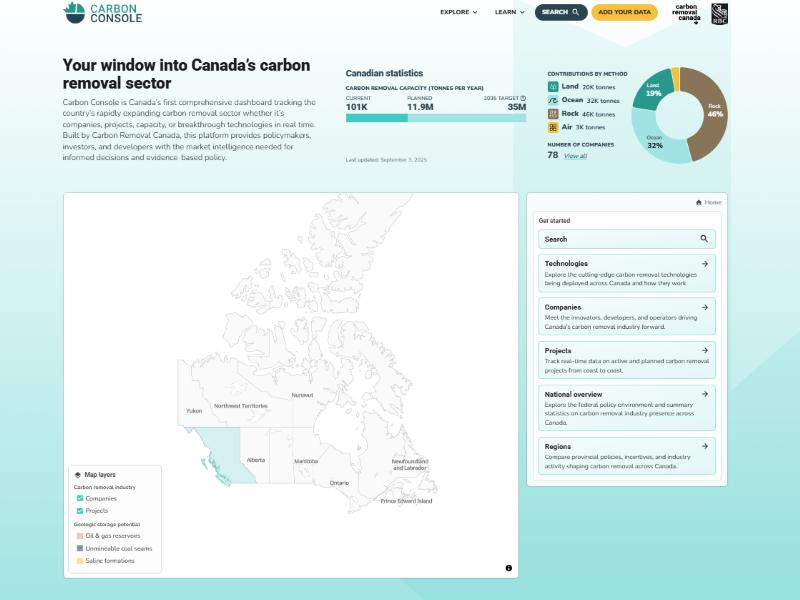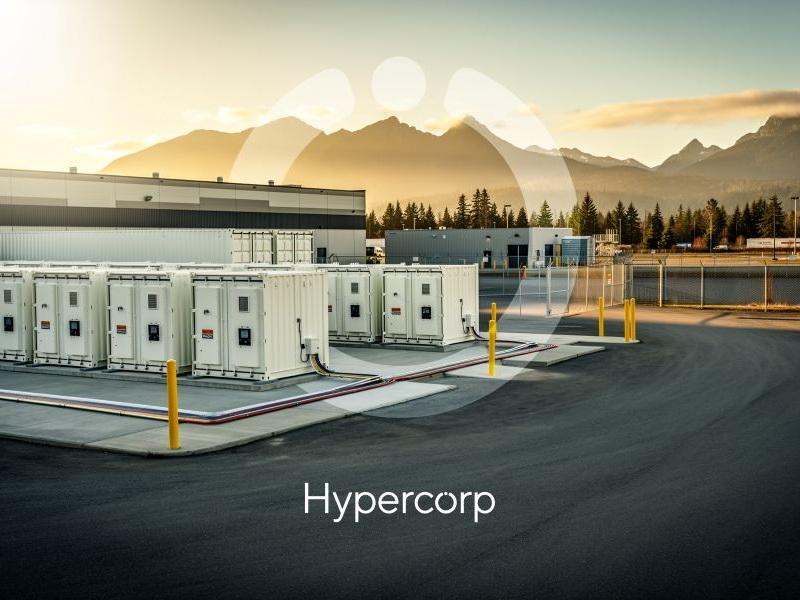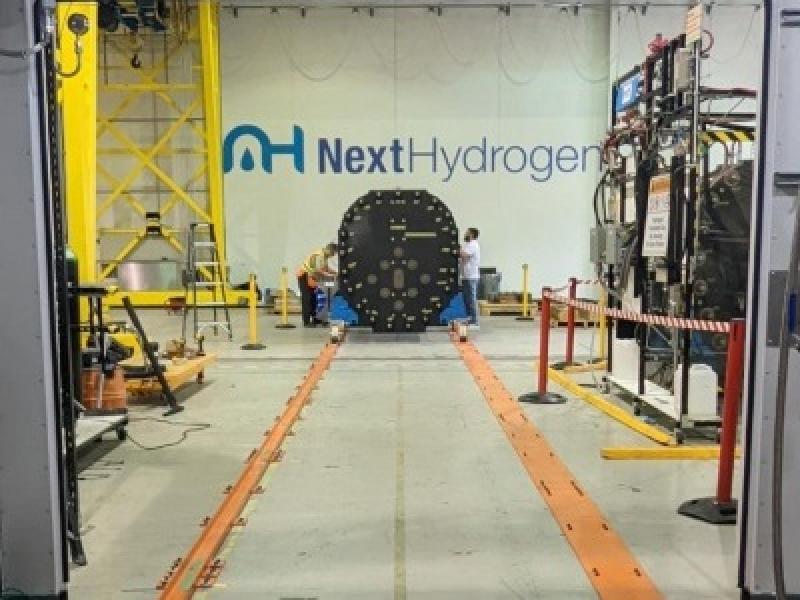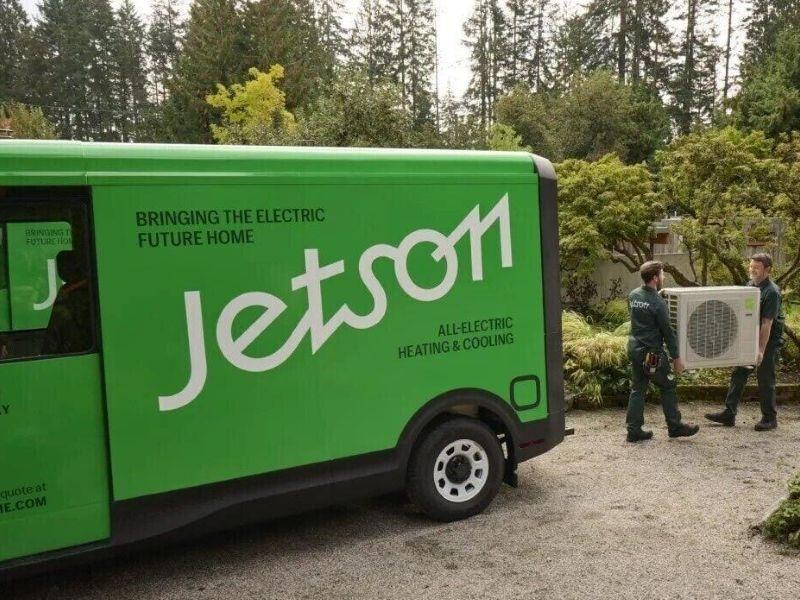
A website by non-profit Carbon Removal Canada that summarizes the state of the emerging sector and planned capacity across the country is intended to “solve a pretty critical market intelligence problem,” the organization’s head said.
Released today, the Carbon Console tracks the Canadian carbon removal industry, which captures greenhouse gases from the environment through various means for permanent burial and sequestration. The non-profit suggests Canada could reap tens of billions of dollars in economic activity from the sector.
“We found that information about Canada’s carbon removal sector is scattered all over the place,” Na'im Merchant, executive director of Carbon Removal Canada, said in an interview with Sustainable Biz Canada. The console is meant to “centralize all that information in one platform in a transparent manner.”
Today, there is enough carbon removal capacity to extract 101,000 tonnes of carbon dioxide (CO2) per year, with almost 12 million tonnes of capacity planned, according to the Console. There are 78 companies in the sector operating in Canada, made up of technology providers, project developers and operators.
The information can help policy makers inform their work, while the private sector can make better-informed decisions such as where to site a project, Merchant said.
Based in Toronto, Carbon Removal Canada works to accelerate the “responsible scale-up of carbon removal.”
The Carbon Console was funded via a partnership with RBC.
Where Canada’s carbon removal industry stands today
The organization collected publicly available data, made direct outreach to carbon removal industry players, and conducted its own research drawing from sources such as media reports and pitches to local governments, to create the Console.
Governments, community groups and local non-governmental organizations were highly interested in the Carbon Console so they could be better informed about the nascent sector, Merchant said.
Not all carbon removal technology is the science-fiction-like direct air capture that filters CO2 from the atmosphere. Nature-based solutions such as converting forestry and agricultural biomass into biochar, a carbon-rich solid material, are popular.
Fewer than 50 projects are currently underway. A plurality of the current removal capacity is from rock-based carbon removal that involves mineralizing CO2, followed by ocean-, land- and air-based methods.
Merchant is “amazed at just the amount of projects that are operating or under development or planned.” The 11.9 million tonnes of planned capacity was “a big shock,” as Carbon Removal Canada expected closer to one million. It is a sign companies are building a diverse scope of projects and carbon removal is no longer a “science experiment,” he said.
The 11.9 million tonnes would, however, represent just a sliver of the 708 million tonnes of CO2 equivalent emitted in 2024 across Canada.
One metric absent from the Carbon Console is the amount of investment committed into the sector. Carbon Removal Canada plans to add more data points to the website over time, Merchant said, including the dollars put toward the technology.
How Canada could lead in the sector

British Columbia is an innovation leader in the sector, Merchant noted. Companies based in the province include Carbon Engineering, Arca and Svante.
At the project level, carbon removal has high potential in Alberta, Saskatchewan and Manitoba. Alberta particularly stands out because many large-scale projects are planned for the province, the provincial government has extended generous policy support, and the province has “an entrepreneurial business approach,” Merchant said.
Atlantic provinces could forge ahead in ocean-based carbon removal, he added. Players housed in the region include Aeon Blue, Planetary Technologies and CarbonCure.
Canada could lead the world in carbon removal, according to a 2023 Carbon Removal Canada report, noting advantages such as its clean electricity, skilled energy workforce and fostering of companies. But Merchant warned the country risks falling behind the likes of the U.K. or the European Union because of insufficient government policies.
He laid out three recommendations for the Canadian government to stay ahead:
- creating market certainty for companies by helping to secure buyers and funding;
- expanding the investment tax credit for all forms of carbon removal, not just direct air capture; and
- more targeted research and development funding for carbon removal, such as Natural Resources Canada creating a project stream for the technology.
Carbon removal, in the non-profit’s view, is an investment that can be supported using unspent money in funds, Merchant said. The industry is a “critical sector” that should be supported by the federal government, and the carbon removal credits it generates could even be an export opportunity, he added.










